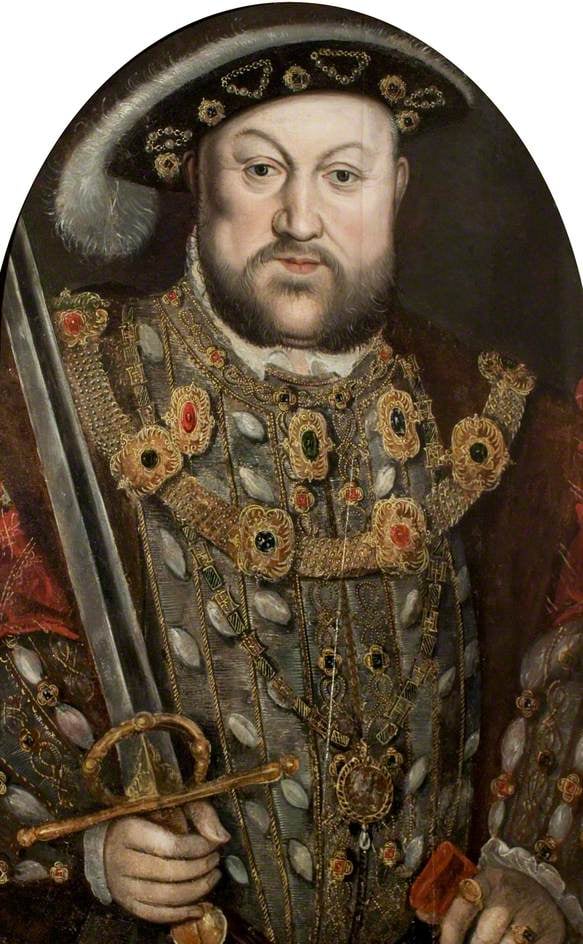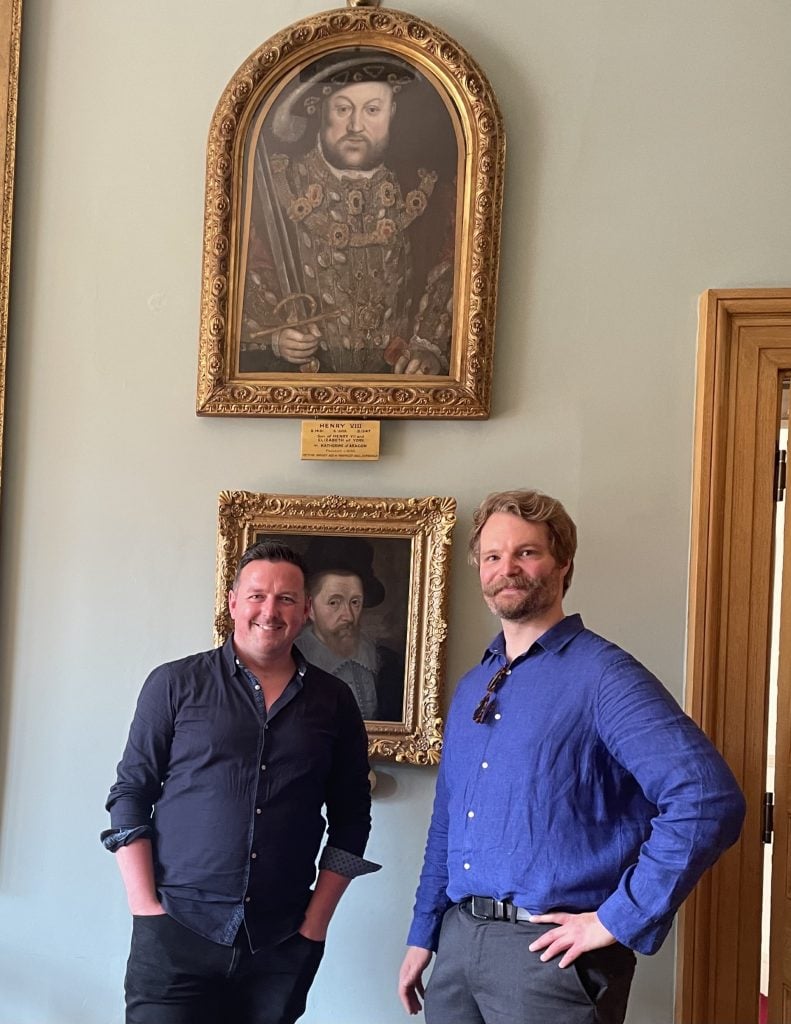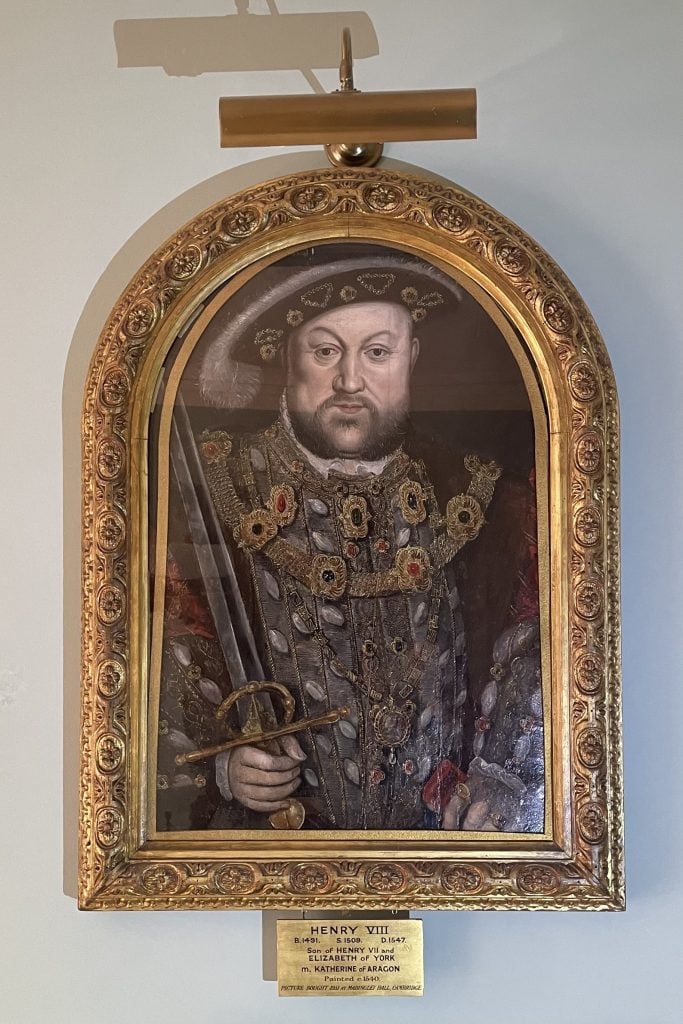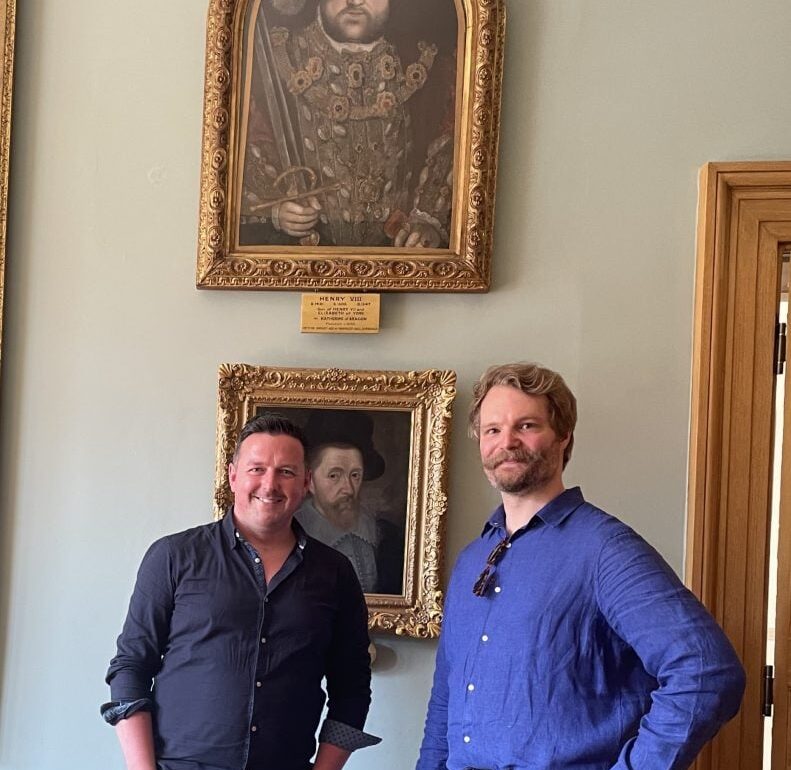28 July 2024
Art World
The work was found about 14 miles from where it was originally hung in the 1500s.

A missing portrait of the English King Henry VIII has been identified after an eagle-eyed art historian spotted it in the background of a photograph posted to social media. It was located just 14 miles from where it was originally hung in the 1500s.
The portrait was commissioned in the 1590s by the tapestry maker Ralph Sheldon as part of a set of 22 portraits that also included other historic figures. It originally hung in Sheldon’s home in Warwickshire, the U.K., but was later lost to time.
Adam Busiakiewicz, an art historian who consults for Sotheby’s, was perusing X (formerly Twitter) and stumbled on Warwickshire Lieutenant Tim Cox’s July 4 photo of a reception in a room in Shire Hall in Warwick. Amid the group of paintings hanging in the background, Busiakiewicz picked out the portrait of Henry VIII. The work depicts the king in a plumed hat and elaborate golden chains, a sword in his hand—in what Busiakiewicz called a “rather cramped composition.”
“Strange discoveries can happen at any moment, it appears. This is especially the case when your eyes are particularly honed in on gilt frames that feature in the corners of photographs of peoples’ homes on social media,” Busiakiewicz wrote in a blog post.

Aaron Manning, left, and Adam Busiakiewicz, right, with the Henry VIII portrait. Photo courtesy of Adam Busiakiewicz.
Busiakiewicz said that the portrait had a “distinctive arched top” like others in the set because they were all incorporated into an architectural frieze in Sheldon’s home. The frame is also identical to the other surviving paintings in the set, which are hung at the National Portrait Gallery in London and Eton College, among other locations.
“A similar frame could, after all, just be a coincidence. What further evidence is there that the Henry VIII in Warwick was actually once part of the Sheldon set? Fortunately for us, the antiquarian Henry Shaw engraved a view of the Long Gallery at Weston later in 1839,” wrote Busiakiewicz, in reference to an illustration by Shaw that detailed how the Henry VIII portrait was displayed above the gallery’s fireplace.
Complicating things, the engraving dates to several decades after Sheldon’s descendant posthumously sold off the collection at Christie’s in 1781. But the Sheldon portrait of Cardinal Wolsey from the collection at the National Portrait Gallery appears to have been “faithfully reproduced” in the 1839 engraving, adding credence to the king’s portrait.
In an update to his blog, Busiakiewicz revealed he was able to examine the work after notifying local authorities about his discovery. He gave a report of its condition.

The missing portrait of the English King Henry VIII. Photo courtesy of Adam Busiakiewicz.
“The oak panel has obviously split in an earlier period, and there is some damage found along the vertical joins which are stable. The face, and many details of the costume and jewelry, are well preserved,” he wrote. “As is usual with paintings of this age, some of the darks have suffered from previous over-cleaning and the hands bear areas of clumsy repainting.”
Using a strong flashlight, Busiakiewicz was able to see the remains of the original inscription, corresponding to those on the other Sheldon painting, which appears to have originally read “HENRY / THE 8.” It was likely overpainted at a much later period.
Busiakiewicz also found that the work was acquired in 1951 by the Warwickshire County Council from Madingley Hall, Cambridgeshire, the ancestral home of the Cotton family that was sold to the University of Cambridge in 1948. The purchase of the portrait, he wrote, was “presumably… part of the County Council’s attempts to aggrandize their historic properties with handsome historic portraits of Kings and Queens.” His investigation into the provenance of the work continues.
Since its rediscovery, the portrait has been moved to the Council’s Museum Collections Center for further research.
Warwick historian Aaron Manning, who is responsible for the interpretation of historical sites managed by the Historic Royal Palaces, inspected the work with Busiakiewicz and called it a “probably lost Tudor portrait of King Henry VIII” as he promised “more to come.”
“He might be the most recognizable English king, but there are only so many portraits of Henry VIII that were painted in the Tudor period,” Manning said in a news release. “It’s wonderful that a lost portrait from the 1500s, especially one commissioned for and displayed in a Warwickshire home, has been rediscovered; a really important addition to the town’s already rich history.”
Follow Artnet News on Facebook:
Want to stay ahead of the art world? Subscribe to our newsletter to get the breaking news, eye-opening interviews, and incisive critical takes that drive the conversation forward.
Article topics
More Trending Stories
This post was originally published on this site be sure to check out more of their content










